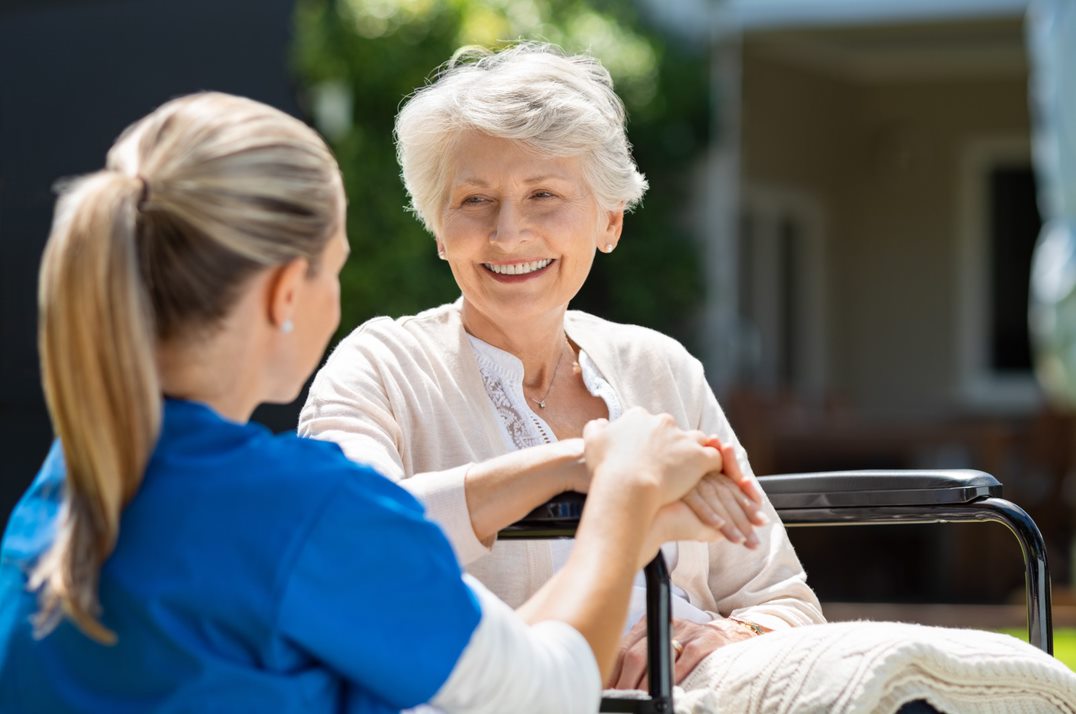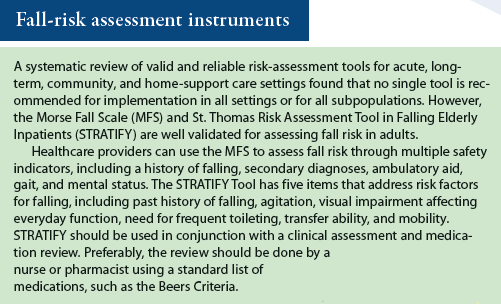A Biased View of Dementia Fall Risk
A Biased View of Dementia Fall Risk
Blog Article
Some Known Facts About Dementia Fall Risk.
Table of ContentsDementia Fall Risk Fundamentals ExplainedSome Known Incorrect Statements About Dementia Fall Risk Dementia Fall Risk Can Be Fun For Anyone9 Simple Techniques For Dementia Fall RiskSome Of Dementia Fall Risk
The FRAT has three sections: fall threat condition, danger variable list, and action plan. An Autumn Risk Condition consists of information concerning history of current falls, medications, psychological and cognitive standing of the patient - Dementia Fall Risk.If the client scores on a danger element, the corresponding number of factors are counted to the patient's loss threat rating in the box to the far. If an individual's loss danger rating amounts to 5 or greater, the person goes to high danger for drops. If the patient scores just four factors or lower, they are still at some risk of dropping, and the nurse needs to utilize their finest clinical assessment to manage all loss danger aspects as part of an all natural treatment plan.
These standard approaches, in basic, help establish a safe environment that lowers unintended drops and marks core precautionary actions for all patients. Signs are vital for people at danger for falls.
Dementia Fall Risk Fundamentals Explained
As an example, wristbands need to include the individual's last and very first name, day of birth, and NHS number in the UK. Details ought to be printed/written in black versus a white history. Only red shade needs to be used to signify unique patient status. These recommendations are constant with current growths in patient identification (Sevdalis et al., 2009).
Things that are as well far may require the client to reach out or ambulate needlessly and can possibly be a threat or add to falls. Aids avoid the patient from going out of bed without any kind of support. Nurses react to fallers' phone call lights quicker than they do to lights launched by non-fallers.
Visual impairment can considerably create falls. Hip pads, when put on appropriately, might decrease a hip crack when loss takes place. Maintaining the beds closer to the floor lowers the danger of drops and severe injury. Placing the cushion on the flooring significantly reduces fall threat in some healthcare settings. Low beds are designed to lessen the range a client drops after moving out of bed.
Dementia Fall Risk Fundamentals Explained
Individuals who are tall and with weak leg muscles who try to rest on the bed from a standing setting are likely to fall onto the bed since it's also low for them to lower themselves safely. If a high person efforts to obtain up from a reduced bed without aid, the person is likely to fall back down onto the bed or miss the bed and fall onto the flooring.
They're made to advertise prompt rescue, not to stop falls from bed. Audible alarms can additionally remind the individual not to stand up alone. The use of alarms can additionally be a replacement for physical restraints. Other than bed alarms, enhanced supervision for high-risk patients additionally may help stop falls.

Individuals with a shuffling stride rise loss opportunities drastically. To lower autumn danger, shoes need to be with a little to no heel, thin soles with slip-resistant tread, and sustain the ankle joints.
Dementia Fall Risk Things To Know Before You Buy
Individuals, particularly older adults, have minimized aesthetic capability. Illumination an unfamiliar environment assists increase visibility if the person have to obtain up during the night. In a research study, homes with appropriate illumination report less falls (Ramulu et al., 2021). Improvement in lighting in the house may decrease fall prices in older grownups (Dementia Fall Risk). The use of gait belts by all health care carriers can advertise safety and security when assisting individuals with transfers from bed to chair.

Sitters are effective for assuring a safe and secure, protected, and safe setting. Nonetheless, studies demonstrated extremely low-certainty proof that sitters reduce fall risk in intense treatment healthcare facilities and just moderate-certainty that options like video clip tracking can click to investigate decrease caretaker read what he said use without raising fall danger, recommending that caretakers are not as useful as initially believed (Greely et al., 2020).
Dementia Fall Risk for Beginners

Enhanced physical conditioning lowers the danger for falls and restricts injury that is sustained when loss takes place. Land and water-based exercise programs might be similarly valuable on balance and gait view it and thereby lower the danger for falls. Water workout might contribute a favorable benefit on balance and gait for ladies 65 years and older.
Chair Rise Workout is a simple sit-to-stand workout that assists strengthen the muscular tissues in the thighs and butts and improves wheelchair and self-reliance. The goal is to do Chair Increase workouts without using hands as the customer comes to be stronger. See resources area for a comprehensive guideline on exactly how to execute Chair Increase workout.
Report this page